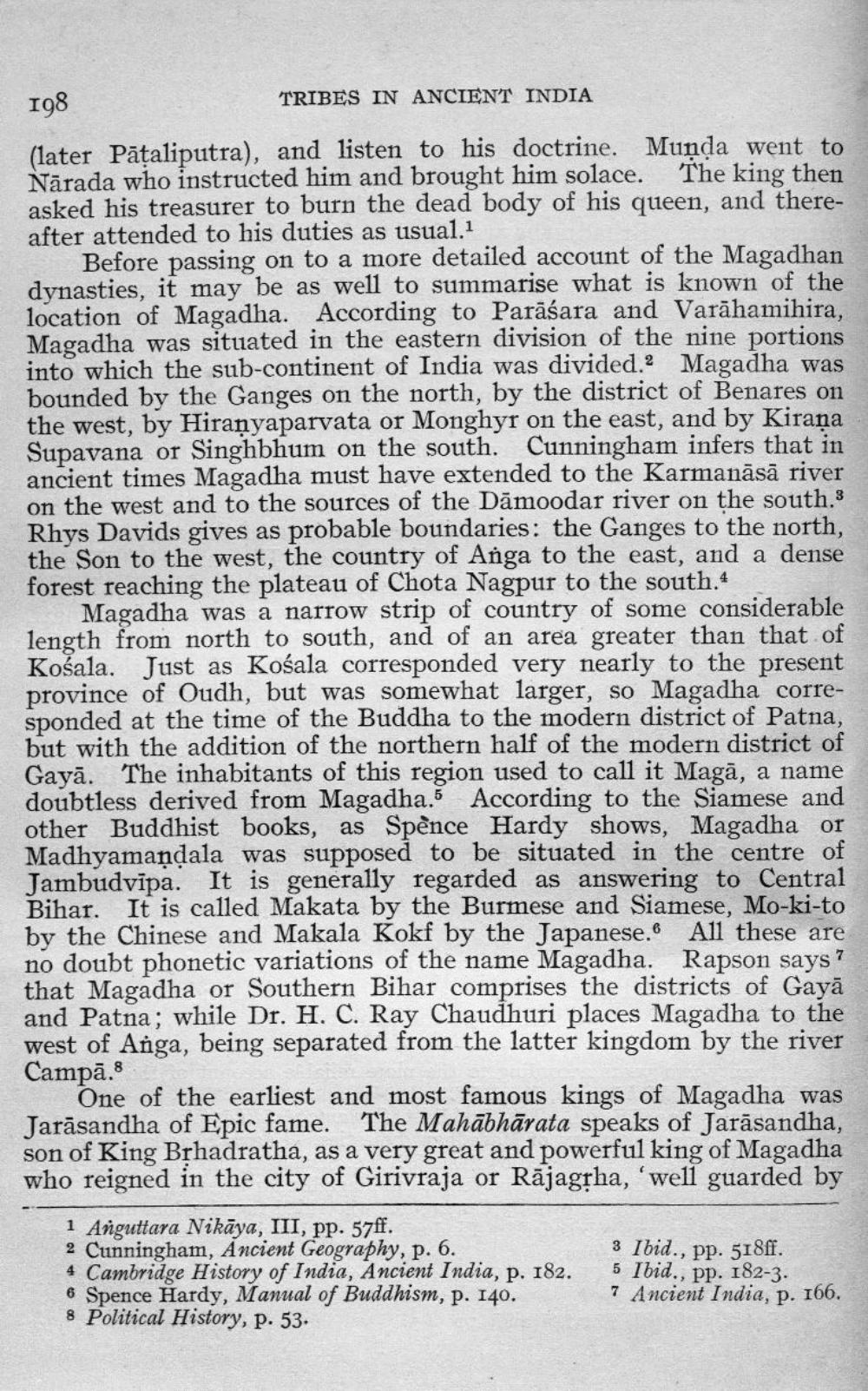________________
198
TRIBES IN ANCIENT INDIA (later Pataliputra), and listen to his doctrine. Muņda went to Nārada who instructed him and brought him solace. The king then asked his treasurer to burn the dead body of his queen, and thereafter attended to his duties as usual.1
Before passing on to a more detailed account of the Magadhan dynasties, it may be as well to summarise what is known of the location of Magadha. According to Parāśara and Varāhamihira, Magadha was situated in the eastern division of the nine portions into which the sub-continent of India was divided.2 Magadha was bounded by the Ganges on the north, by the district of Benares on the west, by Hiraṇyaparvata or Monghyr on the east, and by Kirana Supavana or Singhbhum on the south. Cunningham infers that in ancient times Magadha must have extended to the Karmanāsā river on the west and to the sources of the Dāmoodar river on the south.3 Rhys Davids gives as probable boundaries: the Ganges to the north, the Son to the west, the country of Ariga to the east, and a dense forest reaching the plateau of Chota Nagpur to the south.4
Magadha was a narrow strip of country of some considerable length from north to south, and of an area greater than that of Košala. Just as Kośala corresponded very nearly to the present province of Oudh, but was somewhat larger, so Magadha corresponded at the time of the Buddha to the modern district of Patna, but with the addition of the northern half of the modern district of Gayā. The inhabitants of this region used to call it Magā, a name doubtless derived from Magadha. According to the Siamese and other Buddhist books, as Spence Hardy shows, Magadha or Madhvamandala was supposed to be situated in the centre of Jambudvīpa. It is generally regarded as answering to Central Bihar. It is called Makata by the Burmese and Siamese, Mo-ki-to by the Chinese and Makala Kokf by the Japanese. All these are no doubt phonetic variations of the name Magadha. Rapson says ? that Magadha or Southern Bihar comprises the districts of Gayā and Patna; while Dr. H. C. Ray Chaudhuri places Magadha to the west of Anga, being separated from the latter kingdom by the river Campā.8
One of the earliest and most famous kings of Magadha was Jarāsandha of Epic fame. The Mahābhārata speaks of Jarāsandha, son of King Bịhadratha, as a very great and powerful king of Magadha who reigned in the city of Girivraja or RājagȚha, 'well guarded by
1 Anguttara Nikaya, III, pp. 57ff. 2 Cunningham, Ancient Geography, p. 6.
3 Ibid., pp. 518ff. 4 Cambridge History of India, Ancient India, p. 182. 5 Ibid., pp. 182-3. 6 Spence Hardy, Manual of Buddhism, p. 140.
7 Ancient India, p. 166. 8 Political History, p. 53.




